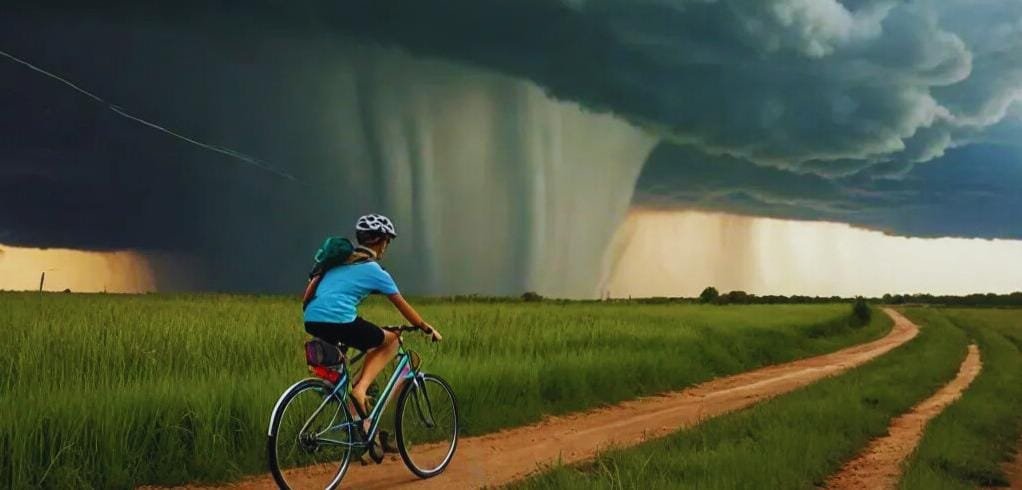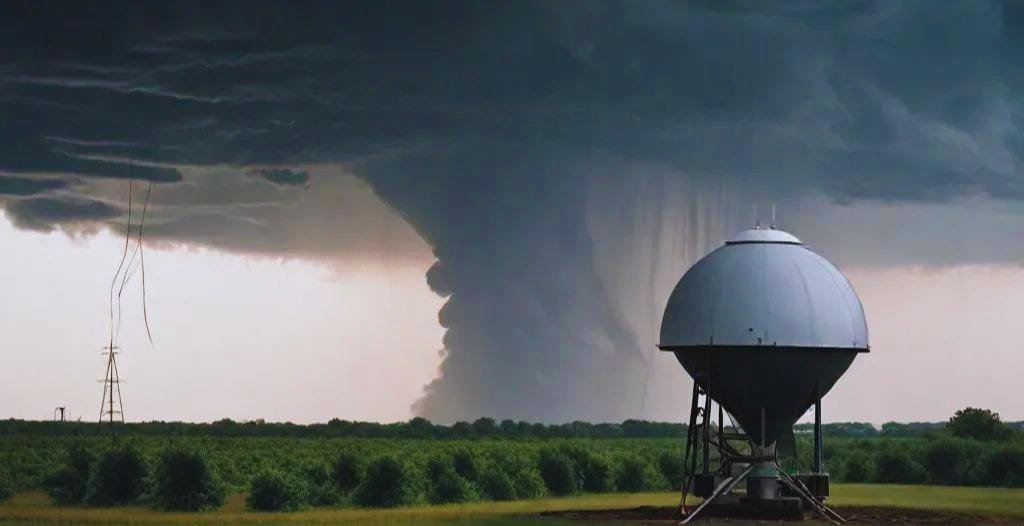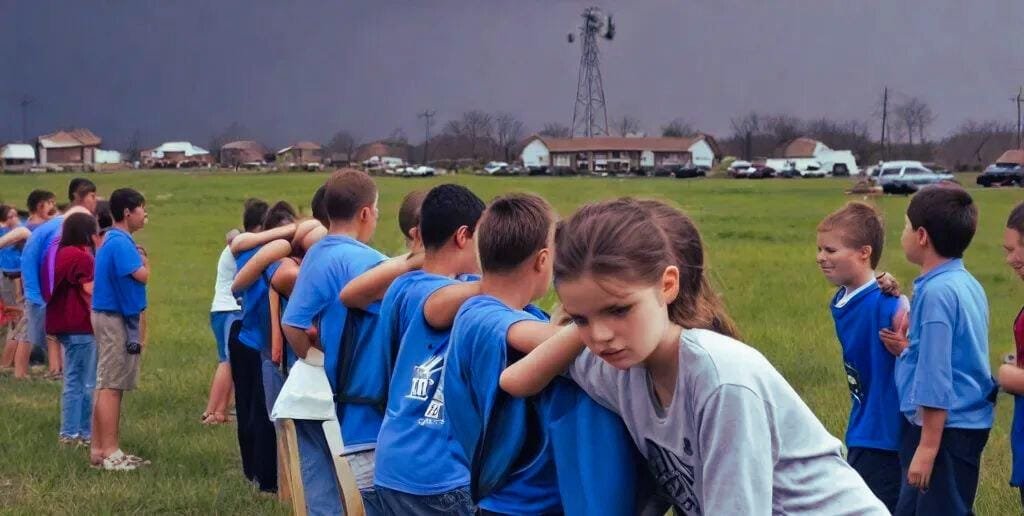Imagine waking up to a perfectly clear spring morning, only to have your smartphone buzz with increasingly urgent weather alerts by afternoon. For residents of Tornado Alley, this scenario isn’t just imagination—it’s a reality that shapes their lives, architecture, and community bonds in profound ways. This vast stretch of the American heartland, where nature’s most spectacular and terrifying atmospheric phenomena occur with breathtaking regularity, tells a story of human resilience, scientific advancement, and the raw power of weather.
The Geography of Risk
Tornado Alley stretches like a weather-worn belt across the central United States, encompassing regions where warm, moisture-laden Gulf air collides with cool, dry Canadian fronts in a dangerous atmospheric dance. While traditionally centered on Texas, Oklahoma, Kansas, Nebraska, and South Dakota, recent years have seen this volatile zone expand its boundaries, pushing eastward into what meteorologists now call “Dixie Alley.”
The landscape itself plays a crucial role in this meteorological theater. The Great Plains’ flat expanse serves as a perfect stage for these atmospheric battles, lacking the mountainous barriers that might otherwise disrupt the formation of severe storms. This unique geography creates conditions unlike anywhere else on Earth, where supercell thunderstorms can develop and mature with frightening efficiency.
Living Under Watchful Skies

For the millions who call Tornado Alley home, weather awareness becomes second nature. Children learn to interpret the sky’s moods before they can ride a bicycle. The sudden drop in temperature, the eerie green tinge of approaching storms, and the distinctive “freight train” roar of a tornado aren’t just weather phenomena—they’re part of the region’s cultural DNA.
Local architecture reflects this reality. Underground storm shelters dot suburban backyards like secret bunkers, while modern homes increasingly feature reinforced safe rooms. Schools and community centers are built with tornado-resistant designs, their thick concrete walls and sturdy steel frames standing ready to shelter hundreds during severe weather events.
The Science Behind the Storms
Understanding tornado formation has evolved dramatically since the first weather observers noticed the connection between colliding air masses and funnel clouds. Modern meteorology reveals a complex interplay of factors necessary for tornado development:
- Wind shear at various atmospheric levels
- Unstable air masses with significant temperature differences
- Moisture content and dew point spreads
- Lifting mechanisms to initiate storm development
- The presence of a cap or inhibiting layer that breaks
These elements combine in a meteorological ballet that scientists can now predict with increasing accuracy, though tornadoes maintain an element of unpredictability that commands respect from even the most experienced forecasters.
Technology and Prediction

The technology used to track and predict tornadoes has undergone revolutionary changes. Doppler radar, once a groundbreaking advancement, has evolved into dual-polarization systems that can distinguish between rain, hail, and tornado debris. Machine learning algorithms analyze atmospheric data in real time, helping meteorologists issue more accurate and timely warnings.
Storm chasers, once seen as thrill-seekers, now form an essential part of the warning system. Equipped with mobile radar units and streaming capabilities, these weather warriors provide ground-truth data that complements satellite and radar observations, creating a more comprehensive picture of developing storms.
Economic Impact and Adaptation
Living in Tornado Alley carries significant economic implications. Insurance premiums reflect the elevated risk, while building codes require additional reinforcement and safety features that increase construction costs. Yet these investments pay dividends in lives saved and property protected.
Communities have adapted through innovative approaches:
- Strengthened building codes that emphasize wind resistance
- Economic incentives for installing storm shelters
- Public-private partnerships for emergency warning systems
- Development of weather-resistant infrastructure
- Creation of community storm shelters in mobile home parks
Community Resilience
Perhaps the most remarkable aspect of life in Tornado Alley is the sense of community that emerges from shared risk. Neighbors know each other’s shelter situations. Local businesses open their doors to those seeking refuge. Churches and schools transform into emergency shelters during severe weather events.
This community spirit extends to recovery efforts. When tornadoes strike, the response is swift and coordinated. Local emergency management teams work alongside volunteer organizations, while neighbors help neighbors clear debris and rebuild. The phrase “tornado relief” has become synonymous with community solidarity.
Climate Change and Future Implications
As global climate patterns shift, questions arise about Tornado Alley’s future. Research suggests several potential changes:
- Possible eastward shift of the traditional tornado belt
- Increased frequency of tornado outbreaks
- Changes in seasonal patterns and peak activity periods
- Greater variability in tornado intensity and path length
Scientists continue to study these trends, working to understand how climate change might reshape one of America’s most distinctive weather regions.
The Role of Education and Preparation

Education plays a vital role in tornado preparedness. Schools conduct regular drills, while community organizations offer weather awareness workshops. Local media outlets provide detailed coverage of severe weather threats, often pre-empting regular programming to track dangerous storms.
The National Weather Service has refined its warning system, implementing impact-based warnings that provide more specific information about potential tornado threats. This enhanced communication helps residents make better-informed decisions about when to take shelter.
Conclusion
Life in Tornado Alley represents a unique blend of respect for nature’s power and human determination to thrive despite environmental challenges. The region’s residents have developed a remarkable capacity for resilience, turning the threat of tornadoes into a catalyst for community cohesion and technological innovation.
As we face an uncertain climate future, the lessons learned in Tornado Alley become increasingly relevant for communities worldwide. The combination of scientific understanding, technological advancement, and community preparation demonstrates how humans can adapt to and coexist with even the most extreme natural phenomena.
Comprehensive FAQ Section
Q: What exactly defines a tornado, and how is it different from other severe weather phenomena?
A: A tornado is a violently rotating column of air extending from a thunderstorm to the ground. Unlike straight-line winds or microbursts, tornadoes feature a concentrated rotation that can produce incredibly destructive forces in a relatively narrow path. The key differences lie in:
- Rotation patterns and wind direction changes
- Concentrated damage paths versus widespread damage
- Duration and intensity characteristics
- Formation conditions and warning signs
Meteorologists can typically distinguish tornado damage from other wind damage by examining debris patterns and structural failure characteristics.
Q: How has tornado prediction accuracy improved over the past decades?
A: Tornado prediction has seen remarkable improvements through:
- Advanced radar technology implementation
- Integration of machine learning algorithms
- Improved understanding of storm dynamics
- Enhanced communication systems
- Better ground-truth data collection
- Sophisticated computer modeling
- Coordination between various weather agencies
Modern warning systems now provide average lead times of 13-15 minutes, compared to just a few minutes in the 1980s. However, predictions remain challenging due to the complex nature of tornado formation.
Q: What are the most common misconceptions about tornado safety?
A: Several dangerous myths persist about tornado safety:
- Opening windows to equalize pressure (unnecessary and wastes valuable time)
- Seeking shelter under highway overpasses (extremely dangerous)
- Believing mountains or rivers protect from tornadoes
- Assuming large buildings are automatically safe
- Thinking tornadoes can’t strike urban areas
- Believing mobile homes are safe if tied down
These misconceptions can lead to poor decision-making during severe weather events.
Q: How should someone new to Tornado Alley prepare for their first tornado season?
A: New residents should take several key steps:
- Identify local warning systems and sign up for alerts
- Create and practice a family emergency plan
- Prepare a comprehensive emergency kit
- Know their home’s safe space or nearest community shelter
- Purchase weather radio and backup power sources
- Review insurance coverage for tornado damage
- Learn local weather patterns and warning signs
- Connect with neighbors and community resources
- Install emergency alert apps on mobile devices
- Consider installing a storm shelter if none exists
Q: What psychological support resources are available for weather-related anxiety?
A: Various resources exist to help manage weather-related anxiety:
- Professional counseling services specializing in weather-related PTSD
- Community support groups
- Online forums and resources
- Educational programs about weather preparedness
- Stress management workshops
- Crisis hotlines during severe weather events
- School-based counseling programs
- Faith-based support services
Q: How do tornado-resistant building techniques work, and what makes them effective?
A: Tornado-resistant construction incorporates several key elements:
- Reinforced concrete or steel safe rooms
- Impact-resistant windows and doors
- Enhanced roof-to-wall connections
- Strengthened foundation anchoring
- Strategic building orientation
- Aerodynamic design features
- Multiple layers of protection
- Debris impact resistance
These features work together to maintain structural integrity during extreme wind events.
Q: What economic considerations should be taken into account when moving to Tornado Alley?
A: Economic factors to consider include:
- Higher insurance premiums
- Storm shelter installation costs
- Home hardening expenses
- Emergency fund requirements
- Property value implications
- Building code compliance costs
- Maintenance and repair budgets
- Safety equipment investments
- Backup power system costs
- Potential income disruption planning
Q: How do emergency services coordinate during tornado events?
A: Emergency service coordination involves:
- Integrated communication systems
- Pre-established response protocols
- Multi-agency command structures
- Resource sharing agreements
- Training and simulation exercises
- Public information management
- Volunteer coordination systems
- Recovery operation planning
- Medical response coordination
- Infrastructure protection measures
Q: What role do storm chasers play in tornado research and safety?
A: Professional storm chasers contribute through:
- Real-time ground verification
- Detailed storm documentation
- Research data collection
- Warning system validation
- Educational outreach
- Weather pattern analysis
- Technology testing
- Public awareness efforts
However, amateur storm chasing can be dangerous and is discouraged without proper training.
Q: How are tornado patterns changing with climate change?
A: Research indicates several emerging trends:
- Shifting geographical distribution
- Changes in seasonal timing
- Increased outbreak frequency
- Modified intensity patterns
- Altered formation conditions
- Variable path characteristics
- Different risk zones
- New vulnerable regions
Scientists continue to study these changes to improve prediction and preparation strategies.

